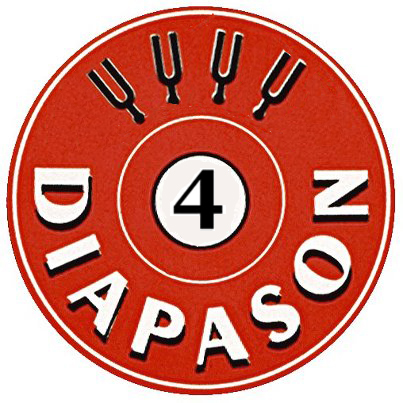Adrienne Krausz Rachmaninoff: Piano Sonata No. 2, Op. 36, Liszt: Sonata in B minor
In today’s world of YouTube, smartphones and virtual reality, at first sight it seems a tall order for both the listener and the performer to programme these two devilishly difficult, complex, and yet heart-wrenchingly moving works on the same CD. The similarities and differences between these two sonatas could be analysed for pages and pages, principles musicological and artistic can be cited for or against this coupling, but for me this compilation was completely instinctual. That certain inner voice, in spite of common sense and thousands of cautions (there are fantastic recordings of both works), gathered power as time went on, it became increasingly imperative, and soon I had no choice, making this recording became a must for me.
It was a taxing, marvellous challenge.
A milestone in my life as a pianist.
Adrienne Krausz
About the album
Recorded at BMC Concert Hall on August 17-18, 2015
Recording producer: László Matz
Recorded and mixed by Viktor Szabó
Artwork: Huszár László / Greenroom
Produced by László Gőz
Label manager: Tamás Bognár
The recording was supported by the National Cultural Fund of Hungary
Reviews
Stéphane Friédéric - Classica (fr)
Jean-Charles Hoffelé - Artamag (fr)
Franpi Barriaux - Franpisunship.com (fr)
Robert Ratajczak - LongPlay blog (pl)
Kovács Ilona - Gramofon ***** (hu)
Czékus Mihály - HFP online (hu)
Szabó I. - Papirusz portál (hu)
Komlós József - Kecskemét online (hu)
Sergei Rachmaninoff:
Franz Liszt:
The album is available in digital form at our retail partners
It was a taxing, marvellous challenge.
A milestone in my life as a pianist.
“Abandon hope all ye who enter here.” (Dante)
Every time I hear or play the beginning of Rachmaninoff’s second sonata, this quotation from Dante comes to mind. With an opening like the big bang, Rachmaninoff blasts us to the ditches of hell, we can’t even breathe and already, without any warning we find ourselves in the dramatic struggle of the B flat minor sonata.
He composed the first version of the work in 1913 (exactly 60 years after Liszt composed his B minor sonata), and revised it in 1931. Pianists will argue hammer and tongs about which is the ‘true’ B flat minor sonata. Matters are further complicated by the fact that Vladimir Horowitz made and performed his own version, with the composer’s consent.
What persuades me that the 1931 version is the definitive one is that Rachmaninoff considered it necessary to revise the piece, and felt it was important to remark at the beginning of the new edition ‘revised and modified by the composer’.
In spite of the meticulous composition, we constantly feel as though we are in a quiveringly nervous, troubled improvisation, truly in the ditches of hell, where light and calm are able only for a couple of measures to stave off the downpours of notes built on the dramatic chromatic theme. Although the piece can be divided into three movements on the basis of tempo indications, like the Liszt sonata this is actually a large-scale work conceived as a single trajectory. Like an exclamation mark, the chromatic theme of the first movement appears again and again during the work (as it does with Liszt), and the link is provided by a small introduction which functions as a kind of bridge before and after the central movement.
The shockingly simple melody of the Lento, and its meditative introspection, is for me one of the most beautiful moments in the musical repertoire, one almost ‘blushes’ at how the composer wears his heart on his sleeve... Rachmaninoff projects the emotions he feels outwards, and I think this is what captures us as listeners.
By the end of the work the glowering clouds slowly clear and in in the third movement the dramatic mood is replaced by a genuine Russian folk celebration.
The ‘Russian’ Chopin. That is how Rachmaninoff is often characterized, though in my view the comparison refers rather to personal and psychological similarities (vulnerability, sensitivity, a constant longing for home, a tendency to depression) rather than a purely musical or pianistic affinity. Rachmaninoff was, I believe, the standard-bearer for the ‘Great Lisztian Romantic Tradition’, not only spiritually but practically too: his cousin and at one time his teacher was the same Alexander Ziloti who was Liszt’s pupil in his last years in Weimar, and later an enthusiastic promoter of Liszt’s art.
“Art is the sensual conveying of the mysterious and divine in man and nature.” (Ferenc Liszt)
I grew up in the knowledge that the Liszt B minor sonata is part of national heritage for every Hungarian pianist. It is a kind of sacred peak, reached only by the initiates. A mountain to be scaled, from which a mere twenty-year-old will slide back down, but as time passes he will progress further and further up the slope, and perhaps after another twenty or twenty-five years, can knock at the holy door.
Liszt’s work is the universe itself which affects the performer in turn; it is a mirror into which the performer, when he looks, sees his own interior world – how the work shapes me and how I shape it. This twenty-five year unending process of learning-practising-performing-resting-learning I now stop for a moment. This recording is a kind of music-making and psychological thermometer: this is where we are at, the B minor sonata and I, on 18 August 2015.
Perhaps no single piece of music has been the subject of as many analyses, studies, essays, and theories, as the B minor sonata. Analyses of its form (a ‘sonata within a sonata’, ‘multi-movement form in a single movement’), of the way the five different recurrent motifs interact, and how the harmony of the piece sometimes seems to presage that of modern music. The grave dramatic situations in the piece, the theatrical characters, the indisputable presence of the ‘devilish and angelic’ naturally give fertile ground for the sprouting of all manner of theories, after all perhaps it is easier for the listeners and performer to think in terms of a programme, it is easier to resolve Liszt’s unanswerable questions with theories.
Perhaps it is the story of Faust, or Liszt narrating his own life story, or perhaps the fight between the divine and the diabolical is to be taken in the biblical sense. Not one of Liszt’s writings refers to any programme, and I believe that in choosing the sonata as a form his aim was rather to raise his musical message to philosophical heights. In the most colossal piano work of the nineteenth century, the deciphering of the world beyond the notes is the most difficult task of all.
Eternal respect to Liszt!
Liszt and Rachmaninoff are the two greatest giants of pianism ever to have lived. Two romantic artists, whose works deal with the mystic questions of existence, transience, happiness and suffering, and convey universal values that even in today’s smartphone world are indispensible, in a word: it is worth living for them.
Adrienne Krausz
Translated by Richard Robinson
Born in Hungary, Adrienne Krausz graduated from the Ferenc Liszt Academy of Music in Budapest, where her teachers were György Nádor, György Kurtág and Ferenc Rados. She has also studied with Yvonne Lefébure and Lívia Rév.
A finalist at the Piano Masters of Monte Carlo in both 1992 and 1993, she has won numerous first prizes in international competitions such as in Senigallia (Italy), in Tarhos (Hungary), in 1989 the “World Competition” in Cincinnati (USA), with her Alice Tully Hall debut at the Lincoln Center (New York), and further prizes in Frankfurt and Sydney. Following an audition, Sir George Solti immediately engaged Mrs. Krausz for a European tour with the Tonhalle Orchestra of Zürich.
She has performed throughout Europe, China, Japan and the United States, Mrs. Krausz has been an invited guest at major music festivals and orchestras (the Budapest Festival Orchestra, the London Philharmonic Orchestra, the Philharmonia Orchestra, the Tokyo Philharmonic Orchestra and the Berliner Symphoniker.)
Some of her prestigious partners were Iván Fischer, Péter Eötvös, Michael Gielen, Youri Bashmet, Miklós Perényi, Shlomo Mintz, Boris Pergamenshikov, Sergej Krylov, the Keller and the Bartók Quartet.
Her Shostakovich recording was chosen as “Indispensable” in the French music-guide at Fayard edition.
adriennekrausz.com
En français
Diplômée de l’Académie Franz Liszt de Budapest dans les classes de György Nádor, György Kurtág et Ferenc Rados, Adrienne Krausz est née en Hongrie. Elle a participé aux Master Classes d’Yvonne Lefébure, et suit toujours les conseils de Lívia Rév.

